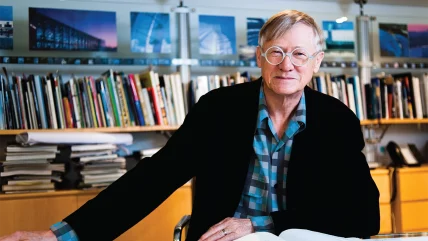
MANY GLOWING tributes have emerged to Sir Nicholas Grimshaw since news broke of his death in September. But the most telling quote or comment I have found on this fascinating architect is one of his own, from a ‘legacy’ film made on his retirement, in 2019, and available on the Grimshaw practice’s website: ‘I remember going to quite a recent office building and you could tell that they were trying to intimidate the visitor from the very start. You clip-clopped over a noisy marble floor. The acoustics were completely non-absorbent, so everything was echo-ey. And by the time you’d signed in and sat in an immaculate black, leather Mies van der Rohe chair you’d already been crushed. And I don’t think that’s the purpose of architecture, in my view. It should be life-enhancing.’
Compared to his peers and fellow exponents of ‘high-tech’ architecture of the 1970s and 1880s – Sirs Norman Foster, Richard Rogers or Renzo Piano – you feel Grimshaw always anchored himself in what it is to feel uplifted and delighted, on a human scale, by the buildings and infrastructure he and his firm invented. While Foster, Piano and Rogers have built their names and empires on ever taller, ever more grandiose megastructures, Grimshaw never lost sight of who the buildings were for, in the broadest sense. His was a spirit of generosity and plurality, that held true whether he was providing the most elegant window onto (or from) the Eurostar trains that glided through his translucent Waterloo Eurostar terminal, or the plants that would occupy the near miraculous Eden Project’s geodesic domes – a material and structural innovation born of having to build lightly, economically, sustainably and flexibly on uncertain terrain (Cornish claypits) to house delicate organisms under tricky conditions.
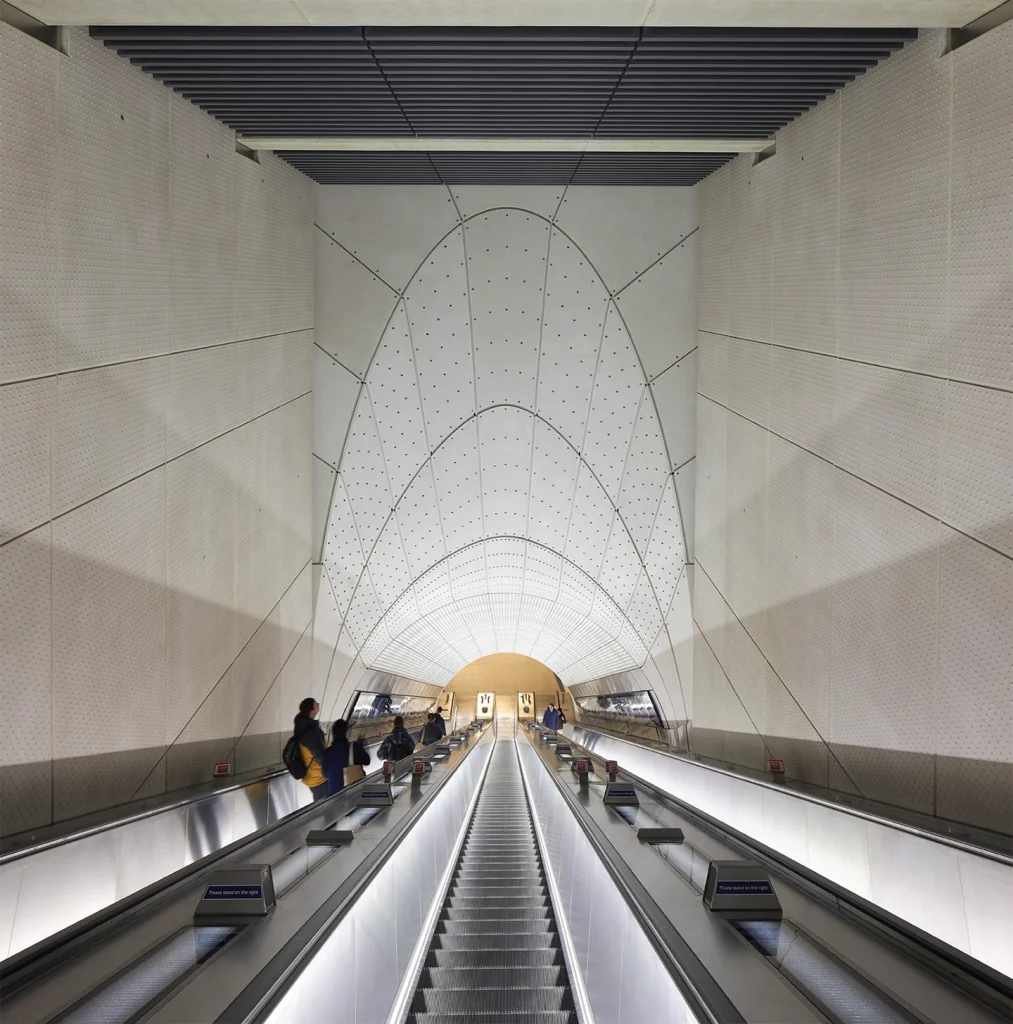
I was lucky enough to use that first Eurostar terminal regularly, and it was always with a sense of happy anticipation that one ventured towards Waterloo, knowing that the wait for the train (on wide, daylit platforms, under that arching, transparent roof) would be as pleasurable as the journey itself. Think, in contrast, of the typical wait in the subterraneanfeeling, cramped and unglamorous departure lounge at St Pancras International.
According to architecture critic Hugh Pearman, the Eurostar’s glazed, curved and tapering 400m trainshed was Grimshaw’s favourite building. It borrowed from the inspirational, expressed engineering of Grimshaw’s hero Isambard Kingdom Brunel, but steered it in a whole new, more organic and contemporary direction. Completed in 1993, it is the building that launched Grimshaw as an international architect of note. And yet, unlike his peers, he never became a ‘starchitect’ – someone who stamps their architectural style and ego across every project, regardless of how appropriate or contextually relevant it is, and often in formulaic/generic, off-the-peg iterations.
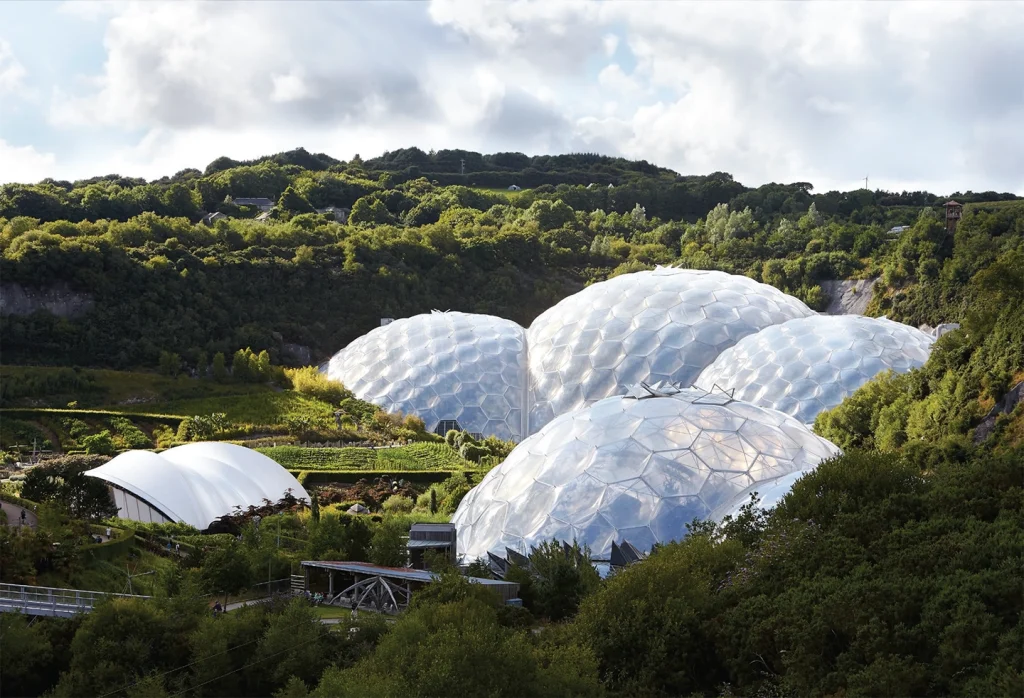
Born in Hove, his father was an aircraft engineer and his mother an artist: a parental DNA that no doubt informed his desire for buildings that have a vital spark of humanity, of joy, while also expressing their intrinsic, structural genius – ‘good bones’ as he called them. Emerging from the Architecture Association (AA) in the 1960s, where he studied under Sir Peter Cook, Cedric Price and John Winter, he teamed up in 1965 with fellow AA graduate Terry Farrell for their first, joint practice, but parted company after 15 years over ‘creative differences’. Farrell was itching to party with the postmodernists.
Grimshaw felt that style and ornament should not override purpose or ‘the beauty of the way things go together’.
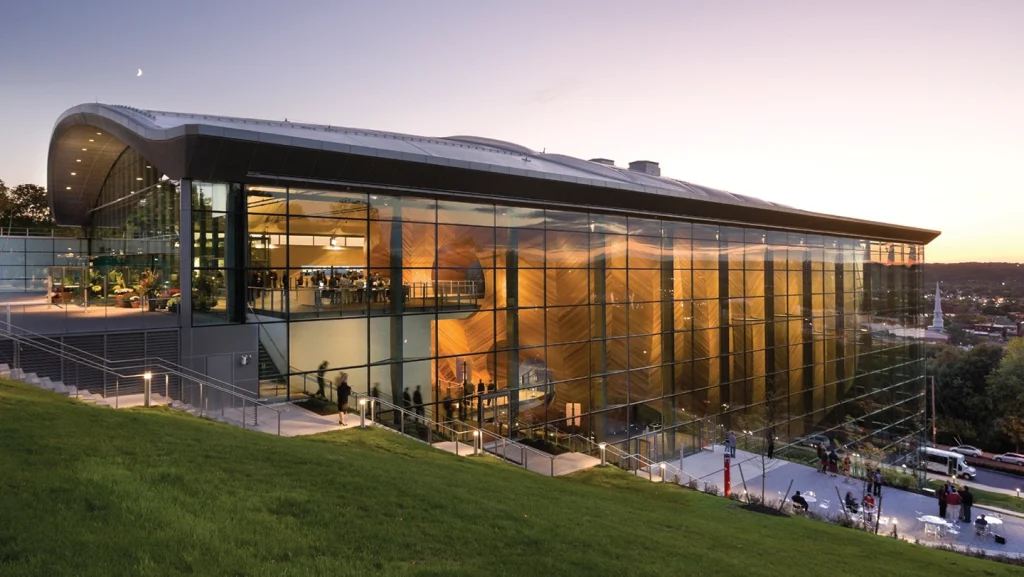
There was more mileage to be had from his industrially inspired, component-based architecture; an ethos that underpinned the affordable, adaptable and often award-winning structures the pair had designed together. For the student hostel in Bayswater, retrofitting a terrace of Victorian houses, Grimshaw designed a plug-in ‘service tower’ of steel, glass and prefabricated GRP, to house a spiralling ramp of modular bathroom pods; it kept the refurbishment costs down and also ensured that no student would ever be left waiting for a shower. ‘I built it like a giant piece of Meccano,’ he said. ‘Somewhere between mechanical engineering, sculpture and rocket science.’
Farrell Grimshaw also built a now listed ten-storey co-housing apartment block, using corrugated aluminium cladding, overlooking Regents Park, to house ten families, including – for a time – their own.
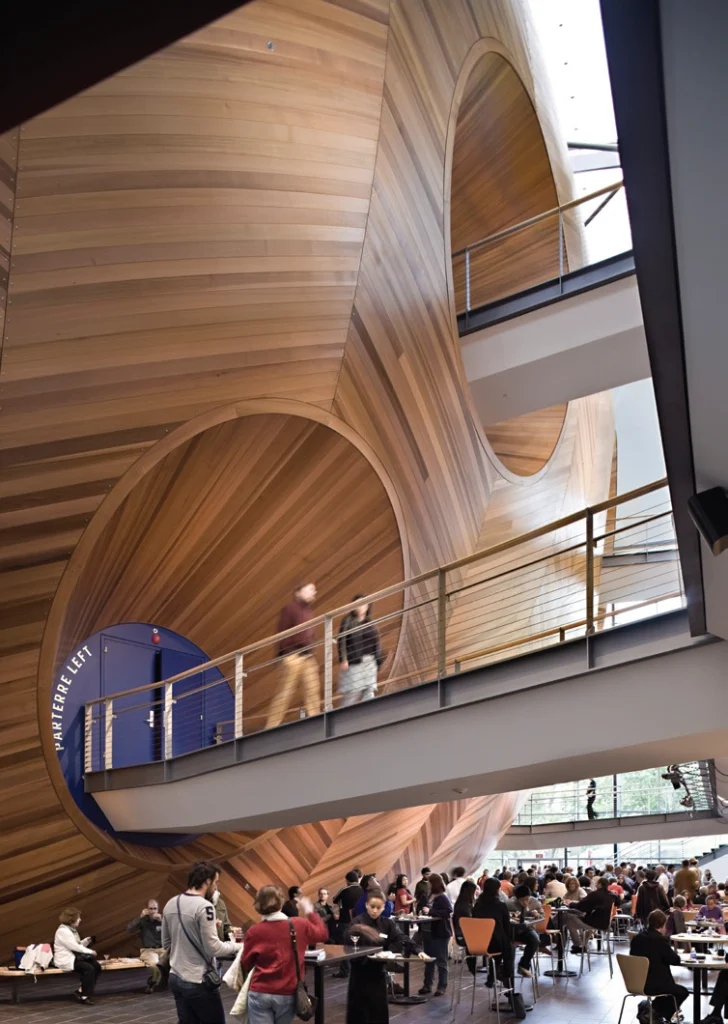
A testament to the success of Grimshaw’s projects is that they have (mostly) not just endured – the Eden Project has to be one of few Landmark Millennium schemes to have survived the economic turbulence of the past two and a half decades and remains one of South West England’s premier tourist attractions – but adapted. His celebrated Financial Times printworks – a Cedric Price ‘fun-house’ for newspapers, the full glory of their machinery, their printing and production visible for miles around – is now listed, and used as a server-farm. The award-winning Herman Miller furniture factory in Chippenham, in his words ‘a steel frame with an interchangeable external skin of fibreglass panels’, is now a free-flowing, daylit college for several departments of Bath Spa University, retrofitted and refurbished by the practice.
While these days his peers may trumpet their passion for sustainability, his preoccupation with caring about buildings while not destroying the planet is evident not just in the Eden Project but flagged up by his Expo Pavilion for Seville, in 1992. Sited in Europe’s hottest city, where other pavilions were kept bearable only thanks to energy guzzling air-con units, his was cooled by waterfalls cascading down a glass wall, and powered by PV panels.

Grimshaw was certainly ambitious. He undertook all the necessary training and exams to be able to work in the US without having to hitch himself to a local architecture firm. He set up office in New York, where the practice quickly made a name for innovative further education buildings, including the EMPAC (Experimental Media and Performing Arts Centre) at Troy in upstate New York; its ‘timber egg in a glass box’ trope has been replicated by others in countless subsequent projects. An office in Melbourne followed, leading to the city’s remarkable, undulating Southern Cross railway terminus, which Sir Norman praises in that aforementioned legacy film: ‘I’ve been in Melbourne. I’ve walked through that extraordinary railway terminal building with its fantastic billowing roof that is literally like the dunes of the Sahara.’ It won the Lubetkin Prize for overseas work.
The practice has been garlanded with over 250 prizes of significance, including the Mies van der Rohe Award for the Eurostar Terminus. It received the RIBA Stirling Prize last year for its work on designing the generous and streamlined underground elements of the Elizabeth Line – providing a civic, seamless public transport experience that even Brunel would have admired. Where train stations have remained an enduring passion (Grimshaw’s reinvention of London Bridge is another example, as Foster has said, of the firm’s ability to ‘turn engineering into poetry’) the practice has also contributed a number of elegant and uplifting airports to the world.
However busy the practice got, Grimshaw stepped up to make a difference behind the scenes too. Elected as president of the Royal Academy (RA) at the age of 65, he won widespread praise for his management and overhaul of that notoriously prickly community, and was described as ‘the nicest and most scrupulous chairman’, by Charles Saumarez Smith. During his seven years in post, he saw off an inflated £50m expansion project that would have joined the RA with the Museum of Mankind, to steer the board towards David Chipperfield’s thoughtful remodelling and refurbishment of the existing RA buildings.
Knighted in 2002, he was awarded the ultimate RIBA gold medal in 2019, the year he retired as chairman of the practice, which now boasts 650 staff and offices in eight locations: London, New York, Melbourne, Sydney, Auckland, Los Angeles, Paris and Dubai. In the legacy film, he praises the utopian spirit of the 1960s, and the idealism that fuelled young AA students: ‘The feeling of people working towards a better world… but not such a commercial world.’ A rare spirit, in these times, and a sad loss to the industry.
Sir Nicholas Grimshaw, born 9 October 1939, died 15 September 2025





